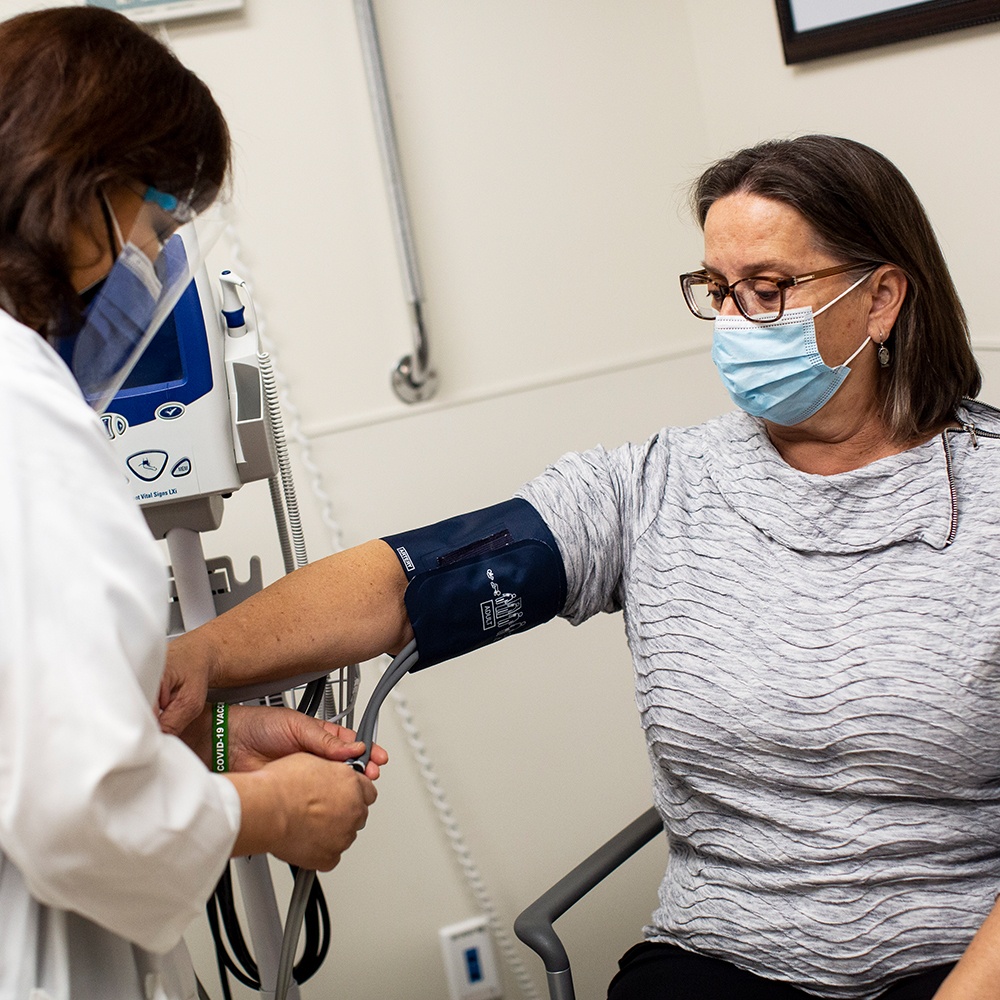Right Heart Cardiac Catheterization

Overview
What is a Right Heart Catheterization?
A right heart catheterization is a procedure that lets your doctor to see how well your heart is pumping and to measure the blood pressure in your heart and the main blood vessels in your lungs. During this procedure a long thin catheter is inserted in an artery or vein in the groin, arm or neck and threaded through the blood vessels to your heart. A right heart catheterization is different than a left heart catheterization. In the right heart catheterization, the catheter is passed through the veins and in a left heart catheterization, the catheter is passed through the artery. If your doctor discovers blockage or narrowing of the blood vessels, a procedure called cardiac angioplasty may be performed to clear the blockage and enhance blood flow.
Why
Why Right Heart Catheterization?
Your doctor may recommend a right heart catheterization to diagnose, treat or manage the following conditions:
Heart failure
Heart failure is when your heart muscle becomes weak and can’t pump blood efficiently.
Congenital heart disease
These are heart conditions that are present at birth.
Cardiomyopathy
Cardiomyopathy is when your heart is enlarged due to thickening or weakening of the heart muscle.
Pulmonary hypertension
Pulmonary hypertension, which is high blood pressure in your lungs.
Heart transplant
If you’ve had a heart transplant right heart catheterization helps measure the function of the transplanted heart and lets the doctor take a biopsy to make sure the transplanted heart is not being rejected. You may have this procedure done as part of your evaluation for a heart transplant.
Heart valve disease
Heart valve disease affects the valves that regulate blood flow from the four chambers of the heart.
Risks
Right Heart Catheterization Potential Risks and Complications
The possible risks and complications of right heart catheterization are very low and rare, but may include:
- Infection.
- Bleeding at the catheterization site.
- Reaction to X-ray exposure.
- Heart attack, stroke or blood clots.
- Cardiac tamponade, which is fluid build-up around your heart.
- Pulmonary artery rupture.
- Lung collapse.
- Low blood pressure.
Your doctor will discuss the benefits and risks of this procedure so you can make an informed decision.

Prep
Preparing for Right Heart Catheterization
Your cardiologist will give you instructions to help you prepare such as:
Food & Drink
No food or drink after midnight prior to the procedure.
Medications
Stop taking your blood thinners or other medications.
What to Expect
What to Expect During a Right Heart Catheterization
During the Procedure
Your right heart catheterization will be done in the catheterization lab and may be done on an outpatient basis.
- You’ll be given a mild sedative to help you relax, and you’ll be awake during the procedure.
- Your doctor will clean and numb the site where the catheter will be inserted. This is usually in the groin or arm.
- You will be connected to an electrocardiogram so you can be monitored throughout the procedure.
- An introducer sheath, which is a larger, hollow tube, will be inserted into your vein and then a catheter will be inserted, and once in place your heart pressures will be measured.
- IV heart medicine may also be given to evaluate your heart’s response.
- Once your doctor has all the information needed, the catheter and introducer sheath will be removed.
- The procedure generally takes about an hour, depending on other tests performed during the procedure.
- You will then be bandaged and monitored until you are sent home.
- Your doctor will discuss the results and offer a treatment plan based on the results.
After the Procedure
You can probably return home within a few hours after the procedure. You will receive instructions about taking care of your insertion site and what to look for. You may want someone else to drive you home. You can also eat and drink normally. You should not engage in strenuous exercise or heavy lifting as recommended by your doctor. You should call your doctor if you experience the following:
- Shortness of breath or difficulty breathing.
- High fever or chills.
- Increased pain, swelling or bleeding in the insertion site.
- Chest pain, nausea, vomiting, profuse sweating, dizziness or fainting.
Specialists